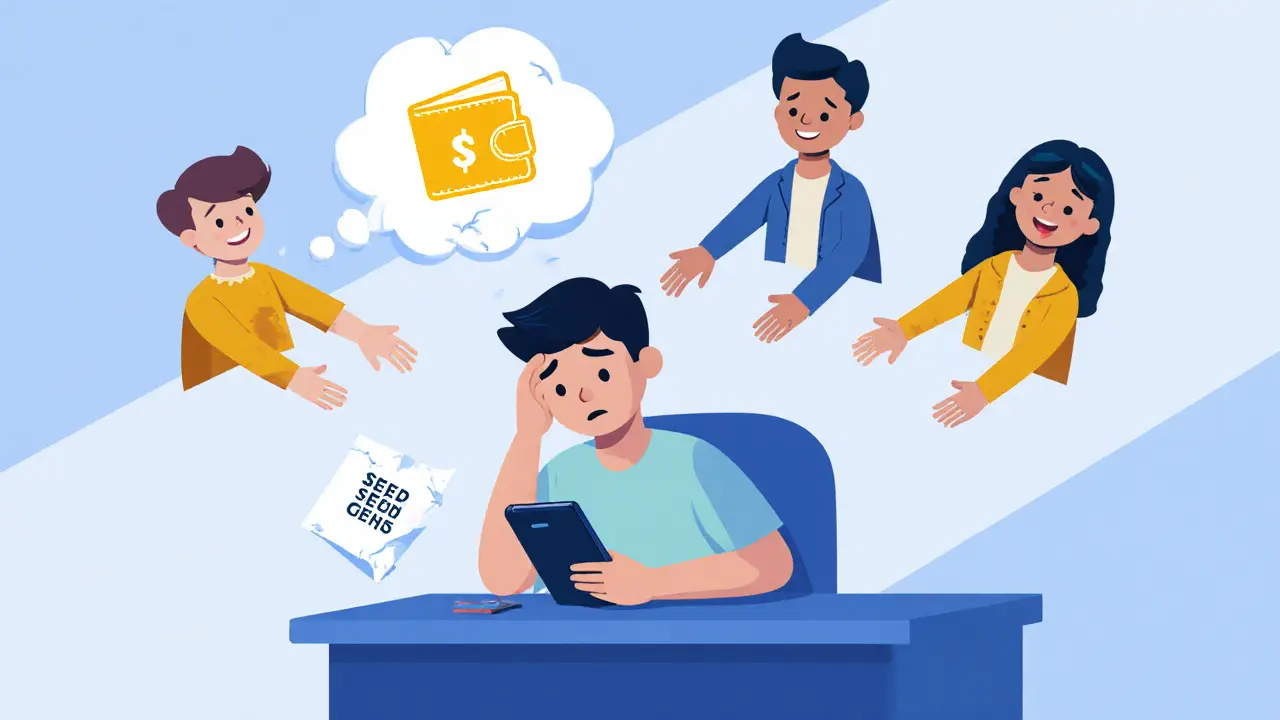Account Abstraction: Simplifying Crypto Interactions
When working with account abstraction, a set of protocols that let users transact without a traditional private key. Also known as AA, it moves transaction verification into programmable smart contract wallets. This shift changes who pays for gas, how signatures are handled, and which devices can sign. In plain terms, you stop treating a wallet like a single key and start treating it like a small app that can decide its own rules.
One of the most visible smart contract wallet, a wallet defined by on‑chain code instead of a fixed address format. can run custom logic, such as batch transactions, social recovery, or biometric checks. Because the wallet itself is a contract, developers can upgrade its features without asking users to create a new address. This opens the door for better user experiences, especially for newcomers who find seed phrases intimidating.
Why account abstraction matters for Ethereum
The Ethereum blockchain, the leading smart‑contract platform that currently uses externally owned accounts for transaction signing. was built with a simple account model: an address + a private key. Account abstraction expands that model, allowing any logic to validate a transaction. The most widely discussed standard that brings this to Ethereum is EIP‑4337, an Ethereum Improvement Proposal that defines a new mempool and entry point contract for AA.. EIP‑4337 does not require a hard fork; it lives entirely in smart contracts, which means it can be adopted gradually and tested on testnets first.
Beyond Ethereum’s base layer, layer‑2 rollup, a scaling solution that batches many transactions into a single on‑chain proof. stands to gain a lot. By letting AA handle transaction fees, a rollup can let users pay with tokens native to the rollup instead of ETH. That reduces friction and can bring down the cost of onboarding. In practice, this creates a direct semantic link: *Account abstraction enables layer‑2 rollups to offer gas‑free onboarding*.
Developers also benefit because AA decouples the authentication layer from the underlying chain. A dApp can ask a user’s wallet to sign a message that proves they own a specific NFT, or that they have completed a KYC check, without touching the base‑layer signature scheme. This flexibility is why many DeFi projects are already prototyping AA‑enabled flows.
Security is another angle. Traditional wallets rely on the secrecy of a single private key. If that key leaks, the entire account is compromised. With smart contract wallets, you can require multiple signatures, time‑locked withdrawals, or even a social recovery mechanism where trusted friends help you regain access. The relationship can be expressed as a semantic triple: *Smart contract wallets require multi‑factor authentication, which improves security*.
From a user‑experience perspective, AA makes it possible to hide the complexity of gas fees altogether. Imagine a game that lets you play without ever seeing an ETH balance. The smart contract wallet can automatically pull gas from a sponsor or from a bundled token. This is already being tested in meta‑transactions, but AA puts the control firmly in the user’s hands rather than a third‑party relayer.
Regulators are also paying attention. Because AA can embed compliance logic directly into the wallet (for example, blocking transactions to sanctioned addresses), it offers a built‑in way to meet AML/KYC requirements. This creates a bridge between “blockchain privacy” and “legal compliance” without requiring separate off‑chain checks.
Looking ahead, the ecosystem around account abstraction is growing fast. Tooling such as Bundler services, infrastructure that collects user operations and forwards them to the entry point contract. are emerging to make AA practical for everyday users. Wallet providers are already launching beta versions that support EIP‑4337, and large DeFi platforms are integrating AA‑ready contracts to lower entry barriers.
In short, account abstraction weaves together smart contract wallets, EIP‑4337, layer‑2 rollups, and compliance tools into a single, more flexible architecture. The result is a blockchain experience that feels more like a modern app and less like a cryptic command line.
Below you’ll find a curated selection of articles that dive deeper into each piece of this puzzle – from detailed EIP‑4337 walkthroughs to real‑world smart contract wallet implementations and the impact on DeFi platforms. Explore the resources to see how you can start using account abstraction today.
